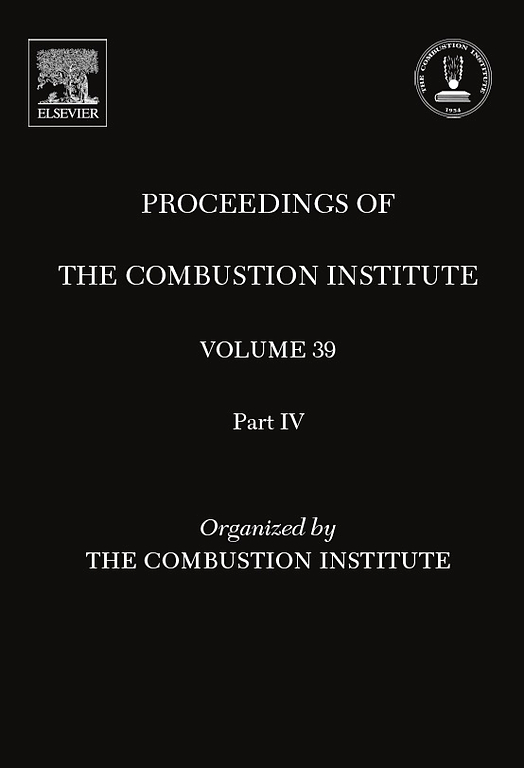在湍流非预混合乙烯/空气发烟火焰中加入多环芳烃表的优先扩散效应
IF 5.2
2区 工程技术
Q2 ENERGY & FUELS
引用次数: 0
摘要
烟尘是燃烧过程中产生的一种不受欢迎的副产品,它不仅会引发公共健康问题,还会导致气候变化,更实际的是会降低发动机的性能。尽管对低烟尘燃烧器的设计至关重要,但烟尘现象的数值预测仍然是一项挑战。其中一个主要困难与气态烟尘前体(多环芳烃)化学反应中涉及的众多化学物质有关。本文提出了一种用于描述 PAHs 的改进建模方法,该方法放宽了对 PAHs 的传输特性和数量的标准假设,而这两个方面对 PAHs 的演变起着重要作用。为此,我们开发了一种混合方法,将用于精确火焰结构描述的半精细化学集成与之前用于气态烟尘前体建模的简单计算得出的预表量结合起来。此外,还扩展了经典的小火焰方法,以考虑非统一的路易斯数。建议的建模方法首先在层流逆流扩散乙烯/空气火焰中进行了验证,然后应用于在剑桥大学运行的三维湍流非预混合乙烯/空气燃烧器。与测量结果的比较证实了该方法在预测多环芳烃方面的有效性。本文章由计算机程序翻译,如有差异,请以英文原文为准。
On the inclusion of preferential diffusion effects for PAH tabulation in turbulent non-premixed ethylene/air sooting flames
Soot is an unwelcome by-product of combustion that not only raises public health issues but also plays a role in climate change and, more practically, deteriorates engine performances. Although critical for the design of low-soot burners, the numerical prediction of soot phenomena remains a challenge. Among other, one major difficulty is linked to the numerous chemical species involved in the chemistry of gaseous soot precursors (PAHs). In this paper, an improved modeling methodology is proposed to describe PAHs, which relaxes standard assumptions on transport properties and number of PAHs, two aspects which play a major role on the PAH evolution. To do so, a hybrid method has been developed, coupling semi-detailed chemistry integration for the accurate flame structure description, with pre-tabulated quantities issued from prior simple calculations for gaseous soot precursors modeling. In addition the classical flamelet approach has been extended to account for non-unity Lewis numbers. The proposed modeling approach is first validated against laminar counter flow diffusion ethylene/air flames and then applied to a 3D turbulent non-premixed ethylene/air combustor operated at Cambridge University. Comparison with measurements confirm the validity of the approach for the prediction of PAH.
求助全文
通过发布文献求助,成功后即可免费获取论文全文。
去求助
来源期刊

Proceedings of the Combustion Institute
工程技术-工程:化工
CiteScore
7.00
自引率
0.00%
发文量
420
审稿时长
3.0 months
期刊介绍:
The Proceedings of the Combustion Institute contains forefront contributions in fundamentals and applications of combustion science. For more than 50 years, the Combustion Institute has served as the peak international society for dissemination of scientific and technical research in the combustion field. In addition to author submissions, the Proceedings of the Combustion Institute includes the Institute''s prestigious invited strategic and topical reviews that represent indispensable resources for emergent research in the field. All papers are subjected to rigorous peer review.
Research papers and invited topical reviews; Reaction Kinetics; Soot, PAH, and other large molecules; Diagnostics; Laminar Flames; Turbulent Flames; Heterogeneous Combustion; Spray and Droplet Combustion; Detonations, Explosions & Supersonic Combustion; Fire Research; Stationary Combustion Systems; IC Engine and Gas Turbine Combustion; New Technology Concepts
The electronic version of Proceedings of the Combustion Institute contains supplemental material such as reaction mechanisms, illustrating movies, and other data.
 求助内容:
求助内容: 应助结果提醒方式:
应助结果提醒方式:


